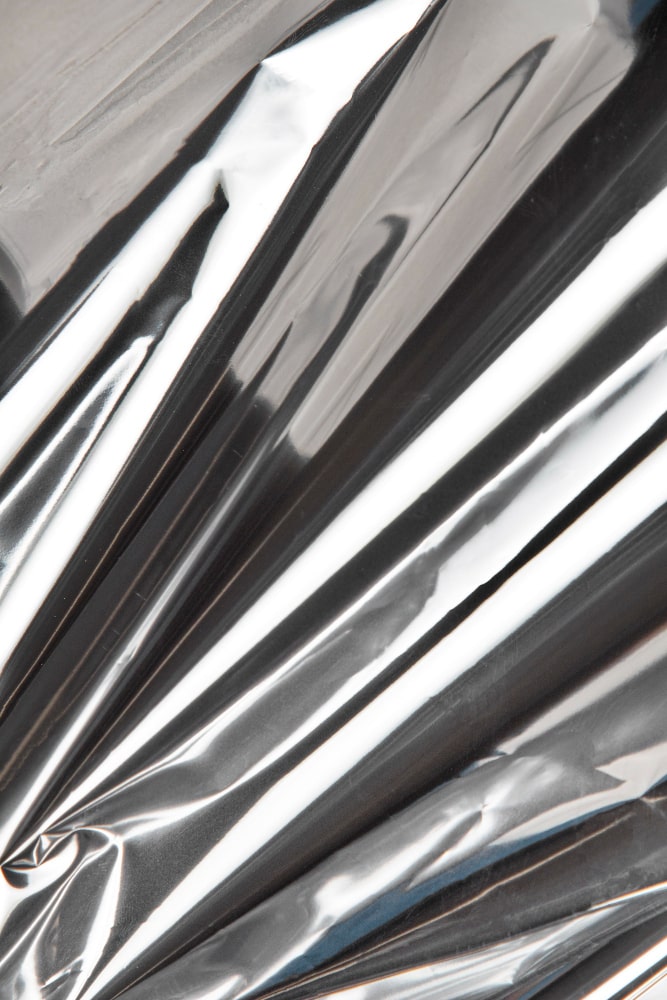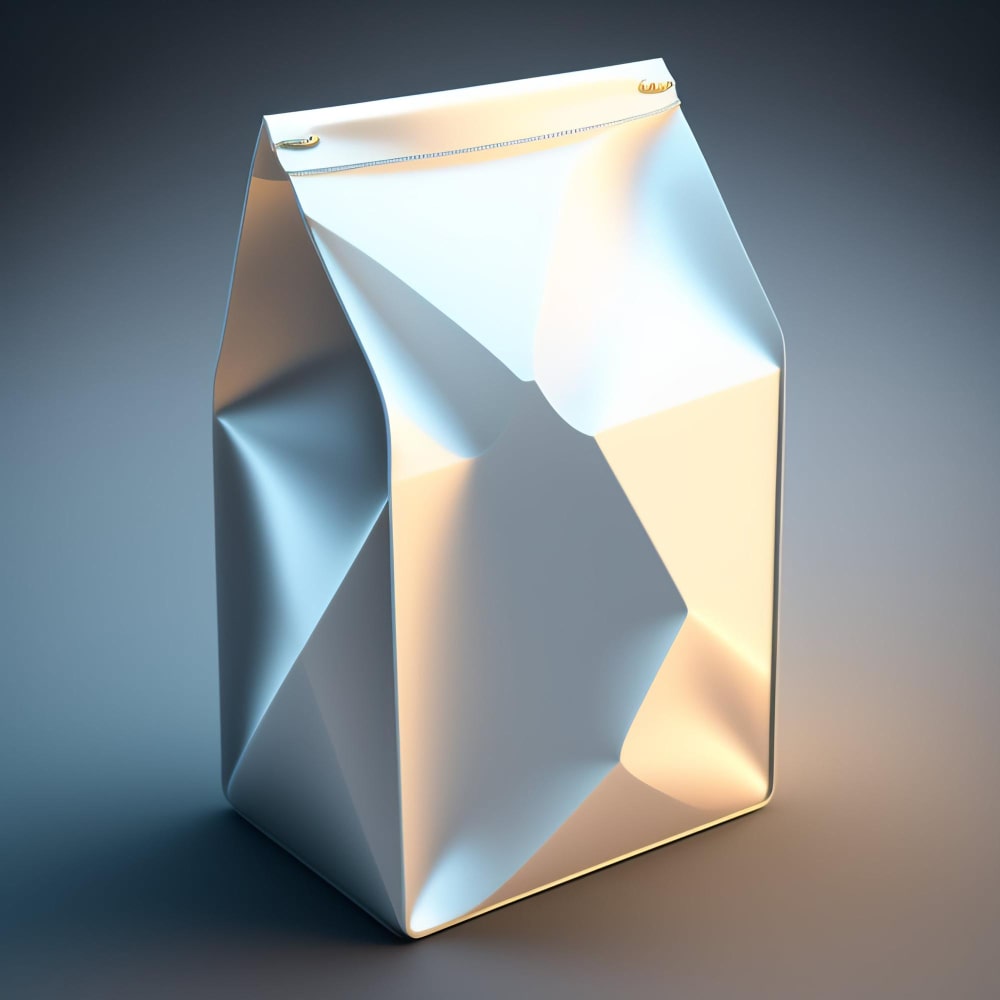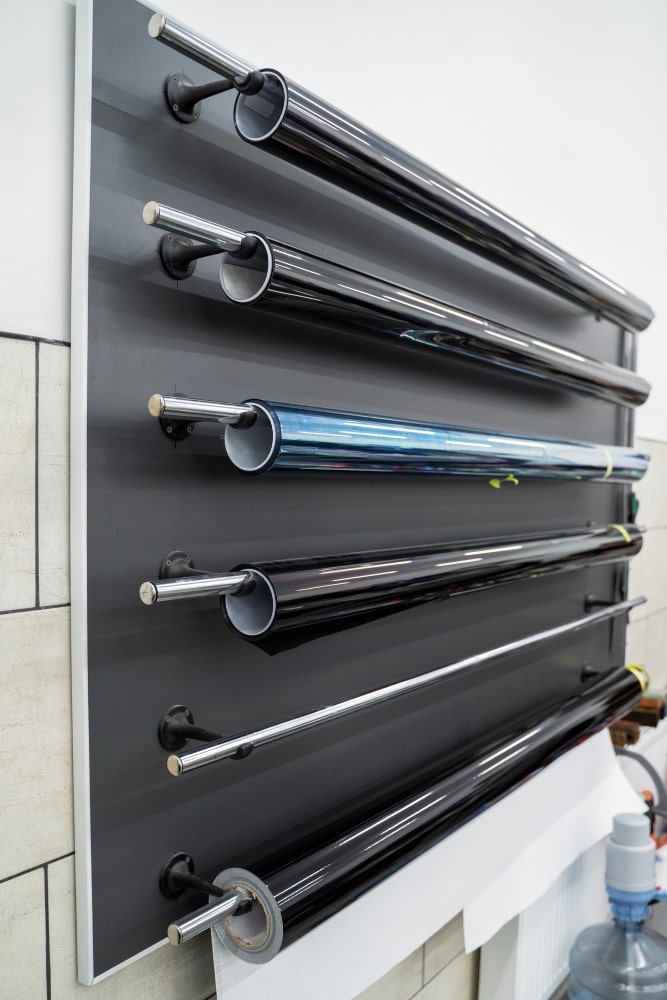Introduction
Mylar is a brand name for a type of polyester film that is known for its remarkable versatility. This highly durable and transparent material has a wide range of applications across various industries. From packaging and insulation to electronics and photography, It is used for its exceptional properties, including resistance to moisture, heat, and chemicals. Its flexibility, strength, and ability to maintain its shape make it indispensable in applications such as food packaging, emergency blankets, circuit boards, and even as a reflective layer in balloons for scientific experiments. Explore the world to discover its numerous practical uses in today’s technology-driven world.
Table of Contents
Composition and Characteristics
Mylar, a versatile and widely-used material, is primarily composed of a type of polyester called polyethylene terephthalate (PET). PET is a synthetic polymer made from petroleum-based materials and is known for its exceptional strength and clarity.
Key properties that set Mylar apart from other materials include:
- Durability: It is incredibly durable and resistant to tearing and puncturing. This durability makes it ideal for applications where the material needs to withstand wear and tear.
- Transparency: It is highly transparent, allowing it to be used in applications where maintaining visibility or clarity is essential.
- Chemical Resistance: It is resistant to many chemicals, which makes it suitable for use in environments where exposure to chemicals or solvents is a concern.
- Moisture Resistance: It has excellent moisture resistance, making it an ideal choice for applications that require protection from humidity and moisture.
- Heat Resistance: It can withstand high temperatures without melting or deforming, making it suitable for use in applications where heat resistance is crucial.
- Electrical Insulation: It is an excellent electrical insulator, which is why it’s commonly used in the electronics industry for insulating cables and wires.
- Dimensional Stability: It maintains its shape and size under various conditions, ensuring consistency in applications where precision is critical.
- Reflectivity: It can be metallized, giving it a high reflectivity. This property is useful in applications like emergency blankets or as a reflective layer in scientific instruments.

These properties collectively make it a valuable material in a wide range of industries, including packaging, aerospace, electronics, photography, and more. Its versatility and reliability have made it a popular choice for applications that require strength, transparency, and resistance to various environmental factors.
A Glimpse into Mylar’s History
Mylar has a rich history that dates back to the mid-20th century. Its development and journey through the years have been marked by several landmark moments:
- 1930s – Invention of Polyester: The story of Mylar begins with the invention of polyester in the 1930s. Wallace H. Carothers, a chemist at DuPont, played a key role in developing the first polyester fibers.
- 1952 – DuPont’s Introduction of Mylar: In 1952, DuPont introduced Mylar as a brand name for its polyester film. This marked the official beginning of Mylar’s journey. The name “Mylar” is often used generically to refer to polyester film, much like “Kleenex” is used for tissues.
- 1955 – Space Exploration: Mylar gained recognition when it was used as the first thermal blanket on a spacecraft during NASA’s Pioneer 4 mission. This application highlighted Mylar’s ability to withstand extreme temperatures.
- 1960s – Photography: Mylar found its way into the world of photography as a substrate for color photographic film, enabling more vibrant and long-lasting images.
- 1969 – Moon Landing: Mylar played a crucial role in the success of the Apollo 11 mission by serving as the reflective material in the lunar module’s insulation, helping to protect astronauts from the harsh lunar environment.
- 1970s – Magnetic Tape: Mylar was widely used as a substrate for magnetic tape in audio and video cassettes, improving the quality and durability of recorded media.
- 1980s – Solar Control: Mylar films were utilized in architectural and automotive applications for solar control and energy efficiency, helping reduce heat and glare from the sun.
- 1988 – Emergency Blankets: Mylar emergency blankets became popular for outdoor enthusiasts and in disaster relief efforts due to their compactness and ability to retain body heat.
- 1990s – Electronics: Mylar became a staple in the electronics industry, serving as an excellent insulator for cables and wires.
- Present Day – Packaging and Beyond: it’s applications continue to expand, finding use in food packaging, insulation, balloons for scientific experiments, and flexible electronics.
Mylar in Everyday Life
Here are some common uses of Mylar and how it affects our daily lives:
- Food Packaging: It is commonly used in food packaging. It helps keep food fresh by providing a barrier against moisture, oxygen, and light. When you enjoy a bag of potato chips or a pouch of coffee, it plays a important role in preserving the quality of the product.
- Emergency Blankets: It emergency blankets are compact and lightweight, making them a staple in outdoor activities. Hikers, campers, and first responders rely on these blankets to stay warm in emergencies, demonstrating it’s impact on safety in the great outdoors.
- Photography: If you take photos with a traditional film camera, it may be a part of your routine. Mylar-based film offers excellent image clarity and durability, contributing to the quality of your printed photos.
- Electronics: It is used extensively in the electronics industry. It insulates and protects cables and wires, ensuring the reliable performance of electronic devices you use every day, from your smartphone to your computer.
- Insulation: It is used in various types of insulation, including home insulation and HVAC systems. It helps regulate temperature and energy efficiency in your living spaces, impacting your daily comfort and energy bills.
- Balloon Experiments: In scientific experiments, high-altitude balloons equipped with Mylar balloons are used to carry instruments into the stratosphere. These experiments provide valuable data, and Mylar plays a crucial role in making them possible.
- Solar Control: In buildings and cars, Mylar films help control solar heat and glare, making indoor spaces more comfortable and energy-efficient.
- Archiving and Storage: It is used in archival and storage applications. It helps protect important documents, artwork, and historical artifacts from deterioration due to environmental factors.
- Aerospace: It has a history of use in spacecraft and satellites. Its ability to withstand extreme conditions in space impacts global communications, weather forecasting, and navigation systems.
- Greenhouses: In agriculture, It is used to increase the efficiency of artificial lighting in greenhouses, contributing to the year-round production of fresh produce.

In these and many other ways, it quietly but significantly impacts our daily routines by enhancing the quality, safety, and efficiency of various products and systems we rely on. Its versatility and reliability make it a crucial component in today’s technology-driven world
Mylar vs. Alternatives
Mylar stands out in various applications due to its unique properties when compared to other materials. Here’s a quick comparison and why Mylar shines:
- Mylar vs. Plastic:
- Mylar is a type of plastic, but it is far more durable and heat-resistant than typical plastics. It can withstand extreme temperatures without melting, making it ideal for applications that require thermal stability.
- Mylar vs. Glass:
- Mylar is much lighter and less prone to shattering than glass. This makes it a safer option for applications like windows in harsh environments.
- Mylar vs. Paper:
- Mylar is tear-resistant, moisture-resistant, and has a longer lifespan than paper. It excels in applications where durability and preservation are essential, such as archival storage and outdoor use.
- Mylar vs. Aluminum Foil:
- Mylar offers similar reflectivity to aluminum foil but with the added benefit of being lightweight and resistant to tearing. It’s often used in applications where a reflective surface is needed, like emergency blankets and balloons for scientific experiments.
- Mylar vs. Fabric:
- Mylar is more lightweight and less porous than most fabrics. It’s a preferred choice for applications where moisture or air resistance is vital, such as in food packaging and emergency blankets.
- Mylar vs. Rubber:
- Mylar doesn’t have the elasticity of rubber, but it offers superior resistance to chemicals, UV rays, and heat. This makes it valuable in applications like sealing and gasket materials.
Why Mylar Shines in Various Applications:
- Durability: It’s resistance to tearing, puncturing, and degradation from environmental factors makes it an excellent choice for applications where longevity and reliability are crucial.
- Heat and Cold Resistance: It can withstand extreme temperature ranges, from freezing cold to scorching heat. This property is invaluable in aerospace, insulation, and outdoor equipment.
- Transparency: It’s optical clarity allows it to maintain visibility in applications like food packaging and windows while offering protection.
- Chemical Resistance: It’s ability to resist chemicals and solvents is a key factor in its success in the electronics, automotive, and medical industries.
- Electrical Insulation: It’s insulating properties make it indispensable in the electronics industry, ensuring the safe operation of devices and machinery.
- Lightweight: It is significantly lighter than many materials with similar properties, making it suitable for applications where weight is a concern, such as in aerospace and portable equipment.
- Reflectivity: It can be metallized for high reflectivity, making it ideal for applications where reflective surfaces are needed, such as emergency blankets and balloons in scientific experiments.
Crafting Mylar: The Production Proce
The production of Mylar involves several key techniques:
- Polymerization: The journey begins with the polymerization of polyethylene terephthalate (PET) resin. This process creates long chains of PET molecules by linking ester groups in the polymer, forming a high molecular weight plastic.
- Extrusion: The PET polymer is then melted and forced through a narrow slit or die to form a continuous, flat sheet of the polymer. This process is called extrusion, and it produces an initial, unoriented polyester film.
- Orientation: To enhance the film’s mechanical and thermal properties, the unoriented film is stretched in both the machine direction (MD) and the transverse direction (TD). This orientation aligns the PET molecules and improves the film’s tensile strength and dimensional stability. The stretching process can occur simultaneously (biaxial orientation) or sequentially (uniaxial orientation).
- Annealing: After stretching, the film is annealed, or heat-set, to relieve stress and ensure that it maintains its dimensions during subsequent processing and use. Annealing can also improve the film’s optical clarity.
- Metallization (Optional): In some cases, It may be metallized to add a reflective or barrier layer. Thin layers of metal, typically aluminum, are deposited on the film’s surface through techniques like vapor deposition. This metallized Mylar is commonly used in applications where reflectivity or barrier properties are required, such as emergency blankets and balloons for scientific experiments.
- Coating (Optional): It can be coated with various materials to impart specific properties. For example, coatings can be added to enhance it’s resistance to chemicals, make it heat-sealable, or provide antistatic properties, depending on the intended application.
- Slitting and Cutting: The Mylar film is slit and cut into the desired width and length to meet the specifications of different applications. This is typically the final step in the manufacturing process.
Throughout its production, quality control and precision are paramount to ensure that the film meets the required standards for various industries. The thickness, optical clarity, and mechanical properties are closely monitored and controlled at every stage.
Mylar’s Eco-Footprint
concerns and the efforts toward greener solutions:
Environmental Concerns:
- Non-Biodegradable: It is made from polyethylene terephthalate (PET), a type of plastic. PET is non-biodegradable, meaning it doesn’t break down easily in the environment, leading to long-lasting waste.
- Resource Intensive: The production of PET resin, the primary component of Mylar, requires significant energy and resources, contributing to carbon emissions and environmental strain.
- Recycling Challenges: While It is technically recyclable, the recycling process is more complex than for other materials like glass or paper. This complexity can discourage recycling efforts.
Efforts Towards Greener Mylar Solutions:
- Recycling Initiatives: Some manufacturers have taken steps to promote the recycling of Mylar. They encourage the collection and recycling of Mylar products to reduce waste. However, widespread recycling of Mylar remains a challenge due to limited recycling facilities and consumer awareness.
- Eco-Friendly Alternatives: In response to environmental concerns, there is ongoing research and development of more sustainable, eco-friendly alternatives to traditional Mylar. These alternatives may be biodegradable or made from recycled materials.
- Reduced Thickness: Manufacturers are working to produce thinner Mylar films while maintaining their performance. Thinner films require fewer resources during production and generate less waste, making them more environmentally friendly.
- Recycled PET: Using recycled PET in Mylar production is a sustainable approach. Some manufacturers are incorporating a portion of recycled PET into their film production, reducing the demand for virgin materials and minimizing environmental impact.
- Metallized Mylar Alternatives: In applications where the reflective properties of metallized Mylar are essential, eco-friendly alternatives, such as biodegradable films with reflective coatings, are being explored.
- Waste Reduction: Efforts to minimize waste during its production, such as better control of film thickness and enhanced quality control measures, contribute to reducing the environmental impact of the manufacturing process.
- Consumer Awareness: Increasing public awareness about the recyclability of Mylar and its responsible disposal is crucial. Education can encourage more individuals to participate in recycling efforts.
Advantages of Mylar
The key advantages of using Mylar:
- Durability: It is highly resistant to tearing, puncturing, and wear, making it an ideal choice for applications where long-term durability is crucial.
- Moisture Resistance: it’s ability to resist moisture and humidity makes it valuable in packaging, preserving the quality of products by protecting them from environmental factors.
- Chemical Resistance: It is resistant to many chemicals and solvents, ensuring that it maintains its integrity when exposed to potentially corrosive substances.
- Heat Resistance: it can withstand high temperatures without melting or deforming, making it suitable for applications where heat resistance is vital.
- Electrical Insulation: It is an excellent electrical insulator, ensuring the safe and reliable performance of electronic devices and machinery.
- Transparency: it’s optical clarity allows for transparency, enabling it to be used in applications where visibility or presentation is important.
- Reflectivity: Metallized Mylar offers high reflectivity, making it suitable for applications that require a reflective surface, such as emergency blankets or scientific instruments.
- Dimensional Stability: It maintains its shape and size under varying conditions, ensuring consistency and precision in applications that require accurate measurements and reliability.
- Lightweight: It is significantly lighter than many materials with similar properties, reducing weight and energy consumption in applications like aerospace and packaging.
- Customizability: It can be tailored to specific requirements by adjusting its thickness, coatings, and other attributes to meet the unique needs of different industries and applications.
- Environmentally Friendly: Efforts to promote recycling and the use of recycled PET in Mylar production contribute to a more sustainable and eco-friendly option.
- Wide Range of Applications: it’s versatility allows it to be used in numerous industries, including packaging, electronics, aerospace, photography, and more, enhancing the quality and performance of products in various fields.
Navigating Challenges
Here are the hurdles Mylar faces and strategies to address these limitations:
Hurdles and Limitations:
- Non-Biodegradability: It is made from PET, which is non-biodegradable. When not recycled or disposed of properly, it contributes to long-lasting waste in landfills.
- Energy Intensive: The production of PET resin and the manufacturing process for Mylar are energy-intensive, which can have a negative environmental impact.
- Complex Recycling: While It is technically recyclable, the recycling process is more complex than for some other materials, leading to limited recycling rates.
- Alternative Materials: There is growing interest in finding more sustainable alternatives to traditional Mylar that are biodegradable or made from recycled materials.
Strategies to Address Limitations:
- Recycling Initiatives: Encourage and support Mylar recycling initiatives to increase collection and recycling rates. Public awareness campaigns can help inform individuals about the importance of recycling Mylar products properly.
- Research and Development: Invest in research and development to create more sustainable versions of Mylar. This might involve using recycled PET, developing biodegradable alternatives, or finding ways to reduce the environmental impact of Mylar production.
- Thin Film Technologies: Continue to develop thin film technologies that produce Mylar films with less material while maintaining performance. Thinner films reduce resource consumption and waste.
- Metallized Alternatives: Explore alternatives to traditional metallized Mylar that are more environmentally friendly, such as biodegradable films with reflective coatings.
- Waste Reduction: Implement waste reduction strategies during Mylar production, such as improved quality control measures to reduce manufacturing defects and minimize material waste.
- Consumer Education: Educate consumers about Mylar’s recyclability and the importance of responsible disposal. Encourage them to choose products with sustainable packaging and to recycle Mylar when possible.
- Eco-Friendly Coatings: Develop and adopt coatings for Mylar that are more environmentally friendly, reducing the reliance on harmful chemicals in the production process.
- Sustainable Packaging Design: Collaborate with industries that use Mylar for packaging to design more sustainable packaging solutions. This may involve using less material, optimizing shapes for efficient shipping, and exploring eco-friendly inks and dyes.
- Legislation and Regulation: Advocate for policies and regulations that promote sustainable manufacturing and the responsible disposal of Mylar and similar materials.
By addressing these limitations and adopting sustainable practices, the environmental impact of Mylar can be minimized, making it a more eco-friendly choice in various applications.
Mylar in Pop Culture
Mylar has left its mark in art, entertainment, and various aspects of popular culture. Here’s how Mylar has influenced these domains and some iconic references to Mylar in popular media:
Influence in Art and Entertainment:

- Art Conservation: It is used for preserving valuable artworks, historical documents, and photographs. Its protective properties help prevent fading, yellowing, and damage due to environmental factors.
- Photography: it’s film has been utilized in photography to create vibrant and long-lasting prints. It contributes to the quality and longevity of photographs and is favored by professional photographers.
- Costumes and Fashion: In the world of fashion, designers have incorporated Mylar into clothing and costumes. Its reflective surface adds a futuristic and otherworldly element to outfits, making it popular in sci-fi and fantasy themes.
- Theater and Stage Design: It is employed in theater and stage productions to create visually striking effects. It can be used for reflective surfaces, shimmering backdrops, and special lighting effects.
- Film and Television Production: it is often used as a reflective surface for lighting and special effects in movies and television shows. It can enhance the lighting and atmosphere of scenes, contributing to the visual impact of the production.
Iconic References in Popular Media:
- “2001: A Space Odyssey” (1968): The iconic space suit worn by astronaut Dave Bowman in Stanley Kubrick’s film features a reflective Mylar visor, adding to the movie’s futuristic and otherworldly aesthetic.
- Music Album Covers: Several music albums, especially in the 1970s and 1980s, featured Mylar in their cover art to create eye-catching and reflective designs. Artists like David Bowie and Pink Floyd incorporated Mylar for its visual impact.
- Sci-Fi and Fantasy Films: It is commonly used in sci-fi and fantasy films to create futuristic environments, otherworldly landscapes, and high-tech props. It has appeared in franchises like “Star Trek” and “Star Wars.”
- Art Installations: Contemporary artists have used Mylar in large-scale art installations, creating immersive and reflective environments that engage viewers in a unique visual experience.
- Fashion Photography: Fashion magazines and advertisements have featured models draped in Mylar, reflecting light and adding a futuristic and avant-garde element to the images.
- Documentary Films: In documentary filmmaking, it has been used for archival purposes, preserving historical documents and photographs, and is occasionally referenced in films discussing preservation techniques.
- Comic Books and Graphic Novels: It appears as a material with unique properties in the storylines of some comic books and graphic novels, often in the context of high-tech suits, superpowers, or futuristic settings.
Mylar’s distinctive reflective properties and versatility have made it a favorite material for creating eye-catching visual effects and enhancing the aesthetics of art, entertainment, and popular media. It has become a symbol of the future and the extraordinary in various creative expressions.
Mylar Innovations
The future of Mylar technology is likely to see exciting advancements and innovative applications in various industries. Here are some potential developments and pioneering applications:
1. Sustainable Mylar Variants:
- Future research and development may lead to more sustainable versions of Mylar. These could include biodegradable variants or films made from recycled PET, reducing the environmental impact.
2. Advanced Nanocomposites:
- Mylar films could incorporate nanomaterials to enhance their properties further. For example, the addition of nanoparticles might improve thermal conductivity, electrical insulation, or barrier properties.
3. Medical Devices and Wearables:
- Thinner and more flexible Mylar films could be used in the development of wearable medical devices, such as flexible biosensors or electronic skin for health monitoring.
4. Smart Fabrics:
- It could play a role in the development of smart fabrics for clothing, capable of adjusting to environmental conditions, providing insulation, or monitoring body vitals.
5. Green Energy Applications:
- Mylar films could find use in advanced solar technologies, such as flexible, lightweight solar panels that can be integrated into a wide range of surfaces and structures.
6. Aerospace and Space Exploration:
- It’s lightweight and durable properties make it ideal for future aerospace applications, including lightweight spacecraft and advanced thermal control systems for satellites and space telescopes.
7. Eco-Friendly Packaging:
- It could be used in sustainable packaging solutions, such as recyclable, compostable, or reusable packaging materials, reducing the environmental impact of the packaging industry.
8. Renewable Energy Storage:
- It may contribute to advancements in energy storage technologies, such as lightweight, flexible, and high-capacity capacitors and supercapacitors.
9. Robotics and AI:
- Thin, durable Mylar films could be integrated into robotics, providing flexible joints and sensors for more versatile and adaptable robots.
10. Environmental Monitoring:
- It could be used in the development of environmental monitoring devices for real-time data collection, contributing to our understanding of climate change and pollution.
11. Enhanced Electronics:
- It’s properties make it suitable for the development of advanced flexible electronics, including foldable displays, wearable devices, and flexible printed circuit boards.
12. Art and Architecture:
- It’s reflective and lightweight qualities could continue to influence architectural and artistic installations, creating unique visual and interactive experiences.
The future of it is likely to be marked by increased sustainability, versatility, and adaptability, opening the door to a wide range of innovative applications in diverse industries. As research and technology continue to advance, Mylar will remain a valuable material for addressing complex challenges and improving product quality and performance.
Shaping the Future of Mylar
The trajectory of Mylar suggests a promising role in a sustainable future, as it continues to evolve and adapt to meet the demands of various industries and environmental concerns. Here’s how Mylar can anticipate a role in a sustainable future:
1. Sustainable Materials:
- Anticipating a sustainable future, the development of Mylar variants with eco-friendly attributes, such as biodegradability or enhanced recyclability, could reduce its environmental impact.
2. Green Packaging Solutions:
- It is likely to play an increasingly vital role in sustainable packaging solutions. Innovations in Mylar-based packaging may lead to reduced food waste, improved food preservation, and decreased reliance on single-use plastics.
3. Renewable Energy:
- It’s use in solar panels and other renewable energy technologies is expected to grow. Its ability to enhance solar capture efficiency can contribute to a greener, more sustainable energy future.
4. Eco-Friendly Construction Materials:
- It may find applications in energy-efficient and reflective construction materials that contribute to reduced energy consumption and a more sustainable building sector.
5. Resource Efficiency:
- As industries strive for greater resource efficiency and waste reduction, it’s role in lightweighting and reducing material consumption will become increasingly relevant.
6. Environmental Monitoring:
- Mylar films could be integral in advanced environmental monitoring equipment, helping collect critical data to support efforts in climate change mitigation and pollution control.
7. Art Preservation:
- In a sustainable future, Mylar’s role in art preservation will remain essential. Its protective properties can help ensure the longevity of valuable cultural heritage.
8. Sustainable Agriculture:
- Mylar films are expected to enhance sustainable agriculture practices, improving crop yields and energy efficiency in greenhouses and agricultural applications.
9. Space Exploration:
- As space exploration continues to advance, it’s lightweight and heat-resistant properties will be crucial in the development of space-based technologies and spacecraft.
10. Consumer Awareness:
- Anticipating a sustainable future, raising consumer awareness about it’s recyclability and the importance of responsible disposal will encourage more individuals to participate in recycling efforts.
11. Electronics Recycling
- It’s use in electronics as an insulating material may lead to advancements in the recyclability of electronic components. Sustainable practices for e-waste management can be bolstered by the use of Mylar in electronic devices.
12. Water Conservation
- Mylar films with advanced coatings may play a part in water conservation efforts. These films can be used in irrigation systems to reduce water usage by improving the efficiency of water distribution.
13. Artistic Innovation
- Artists are likely to continue pushing the boundaries of Mylar’s application in their works. Sustainable art forms using Mylar may emerge, reflecting environmental and ecological themes.
14. Scientific Research
- Mylar balloons and high-altitude experiments will continue to provide invaluable data for scientific research. These endeavors may contribute to our understanding of climate change and environmental factors.
15. Innovative Product Design
- As eco-friendly design becomes a priority, Mylar’s lightweight and durable nature may drive innovation in product design. Lightweight, recyclable, and efficient products can reduce their environmental footprint.
16. Circular Economy
- Future sustainability initiatives may focus on the circular economy, where materials like Mylar are designed for longevity, disassembly, and recycling, reducing waste and conserving resources.
17. Collaboration for Sustainability
- Manufacturers, researchers, and industries are likely to collaborate more closely to find sustainable solutions. This collaborative approach can lead to the development of environmentally responsible Mylar materials and applications.
18. Government Regulations
- Anticipating a sustainable future, governments may introduce regulations and incentives to encourage the use of sustainable materials like Mylar and responsible disposal practices.
It’s adaptability, durability, and unique properties make it a versatile material with the potential to contribute significantly to a more sustainable and eco-conscious future. As global awareness of environmental issues continues to grow, It’s role in promoting sustainability across various sectors is poised to expand and evolve in innovative ways.
Conclusion
Mylar, a versatile polyester film, holds a remarkable place in our world. Its durability, heat resistance, and transparency have made it indispensable across various industries. It enhances product quality, offers protection, and improves efficiency in fields like aerospace, electronics, art preservation, and packaging. It plays a pivotal role in shaping our daily routines, even if we often overlook it.
Appreciating Mylar:
Take a moment to appreciate Mylar’s subtle yet powerful influence on our lives. From keeping our food fresh to enabling space exploration, it is a testament to human ingenuity. As we look toward a more sustainable future, It’s adaptability and potential for eco-friendly innovations make it a valuable ally in our pursuit of a greener, more efficient world.
Frequently Asked Questions:
1. What is Mylar made of?
- It is made of polyethylene terephthalate (PET) resin, a type of polyester plastic.
2. Is Mylar recyclable?
- Yes, it is recyclable, but the recycling process can be more complex than for some other materials. Efforts to promote Mylar recycling are ongoing.
3. How is Mylar used in everyday life?
- It is used in various applications, including food packaging, emergency blankets, electronics, art conservation, and more, enhancing product quality and performance.
4. Can Mylar be biodegradable?
- While traditional it is not biodegradable, there are ongoing efforts to develop more sustainable variants with eco-friendly attributes.
5. What are Mylar balloons made of?
- Mylar balloons are typically made of a metallized Mylar film, enhancing their reflective and decorative properties.

